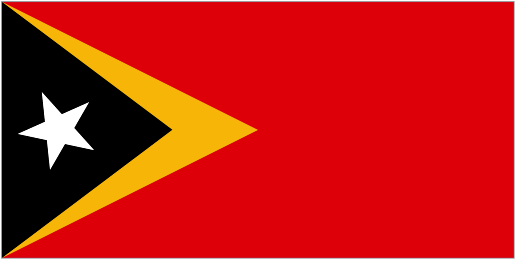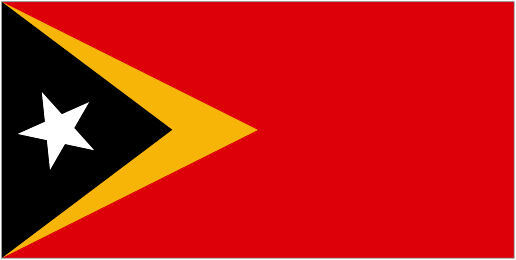
O mundo é dos audazes. Timor triunfará!
— Jorge Heiter

East Timor (now Timor-Leste) is the eastern half of a small island–conveniently named ‘Timor’–southeast of Indonesia. ‘Timor’ actually means East, or Rising Sun, so technically it’s ‘East East’.
Timor-Leste is one of two Catholic countries in Asia, the other being the Philippines; and the only Asian country where Portuguese is a second language.
For over 400 years the Portuguese ruled East Timor as a colony, until a 1975 coup d’etat in Portugal ushered in an era of de-colonialization. With a destabilized government, fighting broke out between two Timorese political parties, one of which allied themselves with Indonesia. (Indonesia occupied the western half of Timor.) The other party, FRETILIN, unilaterally declared East Timor an independent nation on November 28, 1975.
That independence was short lived.
The following week the Indonesian military, under President Suharto, began one of the most brutal, and one of the most ignored, invasions and occupations of the second half of the 20th century.
The United Nations condemned the invasion, but took no further action. Indonesia justified the invasion by claiming that the artificial border that split the island was the result of European imperialism and political oppression. (The Dutch had once occupied West Timor.)
Constancio was a young boy at the time of the invasion. Like many others, he and his family fled to the jungle, where he witnessed friends and family die from illness and starvation. All the while the Indonesian air force continued bombing from above. After several months he was captured and interred in a make-shift concentration camp that was worse than the mountainous jungle.
“There were thousands of people in a small area that was infested by mosquitoes and with no running water, no food. At least 15 people died every day.”
The island was effectively cut off from the rest of the world; it is estimated that of a population of 700,000, up to 100,000 Timorese died in the first 5 years of occupation.
After being released, Constancio became a servant to an Indonesian police officer in Dili. He gained entrance to a private school and became active in a students’ movement for an independent East Timor.
In 1991 Constancio helped organize a demonstration protesting the murder of Sebastiao Gomes, a 22 year-old killed in a church the month before. As over 3,000 unarmed demonstrators converged on the cemetery where Gomes was buried, Indonesian troops opened fire using American-made M16s. He recalled…
“We didn’t think they would open fire with United Nations observers and journalists being there.“
Over 250 Timorese were killed; 200 more ‘disappeared’ in the following military crackdown. What separated the massacre of Santa Cruz from previous atrocities was that it was documented by Australian media, one of the few events on the otherwise isolated island to be so. The massacre at Santa Cruz became a rallying point for supporters of Timorese independence.
With a little less luck, Constancio might have been one of the disappeared, but he was tipped off by an inside friend who warned him not to go home that night when the secret police were waiting for him.
Constancio escaped to the western half of the island with the aid of friends, false papers, and money to bribe an Indonesian official to issue him a passport to Singapore.
He never took a moment of his freedom for granted. Traveling to Portugal and the U.S., he spread awareness of the situation in East Timor. In 1993 he matriculated to Brown University and he continued speaking across the U.S. about his life, the East Timor people, and the horrors he had seen.
In 1996, two of his countrymen Jose Ramos-Horta and Bishop Ximenes Belo, won the Nobel Peace Prize for their efforts at ending the violence in East Timor, bringing international attention to the fate of the small island.
In the late 1990s the determination of Timorese like Pinto, Ramos-Horta, and Ximenes Belo, as well Australian journalists like Allan Naird, met with help from an unlikely source. The crash of the Asian markets in 1997 destabilized Indonesia, and the ensuing recession forced President Suharto to call an end to his 30-year reign in May 1998. Dependent on foreign support during the financial crisis, the new President gave in to the international community’s demands for an election in East Timor.
On August 30, 1999, East Timor voted overwhelmingly for independence from Indonesia. But even after the election, paramilitary groups continued attacks on unarmed civilians in an attempt to provoke widespread violence and justify the need for Indonesian peacekeepers. Despite provocation, the Timorese kept their side of the peace.
Under international pressure, the last Indonesian troops left East Timor on October 31, 1999.
On this day in 2002 Timor-Leste became the first newly-independent nation of the 21st century.
Timor Com Dor e Com Amor
Flight from East Timor: Student works from Brown base toward freedom for his homeland – Richard Morin
East Timor and the International Community – Heike Krieger
The Future of East Timor
The Path out of Poverty
Instability Sours Timor Celebration
I have come a long way, but East Timor has come further




